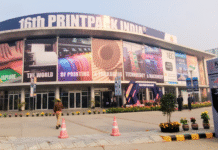Just as every publisher must have an editorial strategy to make her platform distinctive, compelling, and profitable, she must have a technology strategy of how to ally with or outwit big tech. Both strategies require a measure of experience, investment, accomplishment or execution of the last major shift of restructuring, and the ability to know or anticipate the future. Thus, the astrologer has been replaced by information or knowledge events such as the INMA summits.
Unfortunately, the virtual events bring the level of networking down, especially for the mortals who take part. The superstars can maintain their bandwidth with the experts who they can often afford to hire as consultants. However, the idea for every media institution should be to have its own in-house aware, knowledgeable, and creative think tank. And for the regional media to have its community of experts, researchers, and technology developers. INMA does this to a large extent as its experts and speakers, both local and global, are practitioners or else acutely aware of the news media in the subcontinent. but as Dolly Jha suggested on the first day of this year’s event, the legacy print media itself could do much more as a community.
The second day of this year’s event again emphasized measurement. Ulbe Jelluma, managing director of Europe for Print Power in Belgium, speaking of a hybrid media mix for advertisement performance, warned participants of the gap between the perception of print’s effectiveness versus its reality. In determining media choice, he suggested the parameters for measuring performance levels for print – by business effects, response to adverts, attitudinal changes, behavioral changes, amplification of other media performance, and dwell time.
As monetizing reader revenue seems to have taken hold at a considerable number of legacy print media organizations in the pandemic years, the discussion of subscriber churn pointed to bundling as the next big thing. Greg Piechota, INMA’s Readers First Initiative lead, was fully aware of the digital subscription efforts by the South Asian print media. He said that most conversions and renewals are outcomes of engagement, transitioning to readers-first, and building reader engagement for retention backed by data.

Matiur Rahman, the editor of Prothom Alo, a leading daily from the largest media company in Bangladesh, presented a pandemic case study of how print ad revenues plummeted drastically at first and how it successfully turned the situation around. Apart from gearing up its digital and social media channels, the daily capitalized on a major national development. The opening of the new bridge across the Padma river led to an integrated multi-channel activity that brought in unprecedented advertising revenue.

One of the most interesting presentations on branded content could also be one of the scariest for news publishers. Aditi Shrivastava, co-founder, and CEO of PocketAces-FilterCopy in India, spoke assuredly about her organization’s success in creating value with branded content. She explained with examples how her company produces an entire 360 degree of content integrating viral videos, on-demand entertainment, and unique experiences. “Produce content in the same way and of the same quality as you would even if no advertiser was supporting it,” she said. One may disagree with the philosophy of branded content but as one could see from her examples and list of clients, there is no escaping either its importance or momentum.
Federica Cherubini, head of leadership development for the Reuters Institute for the Study for Journalism, shared a wide range of insights for editorial teams from the Reuters Institute’s Digital News Report 2022. Her presentation on trust, avoidance, and other media habits, unfortunately, did not show any of the data directly related to India and South Asia although she said several times that there were special sections or pages in the report that covered the region.
The overall study is based on a sample size of 2,035 of the Indian population of 1.393.4 million, giving the internet penetration as 54%. The sample size is similar for every country researched. Singapore, for example, has a sample size of 2,017, a population of 5.9 million, and an internet penetration of 88%. Apart from quibbling, the report is heroic and any shortcoming only points back to the Indian news media for its lack of investment in its research.
Looking at the two-page article on pages 134 and 135 by research associate Anjana Krishan, covering the India research with graphics in the report, one finds it informative and useful despite its compactness. The data cites sources with footnotes that I have omitted. The report itself is easily accessible and downloadable.
“Television brands NDTV 24×7, IndiaToday TV, and BBC News are the most popular offline brands with our mostly English-language internet-using survey respondents, along with national newspapers such as the Times of India, Hindustan Times, and The Hindu. Print and broadcast television channels are self-regulated in India, with several television channels infamous for sensationalizing news and conducting polarized debates. Print media recovered from the pandemic slump with an overall reported revenue growth of 20% in 2021, including a strong bump from advertisements.
“But legacy media platforms are facing stiff competition online from vibrant, digital-born brands that pursue independent journalism. Many rely on non-profit revenue models, such as grants and reader donations to supplement advertisements. Other digital-born brands such as Newslaundry are entirely driven by subscriptions and donations. The Wire takes strong editorial positions that are anti-establishment and investigative in nature, while Newslaundry eschews editorial positions altogether and believes in portraying diverse viewpoints from the ground. The News Minute caters specifically to news from South India while The Quint aims to build community partnerships through its citizen journalism initiatives and fact-checking services, in addition to regular news. The digital market saw an overall growth of 29% in 2021, with advertising and subscription revenues growing at 29% each.
India is a strongly mobile-focused market, with 72% accessing news through smartphones and just 35% via computers. News aggregator platforms and apps such as Google News (53%), Daily Hunt (25%), InShorts (19%), and NewsPoint (17%) have become an important way to access news and are valued for convenience.”
















